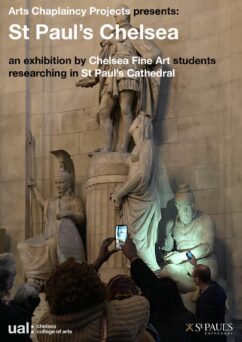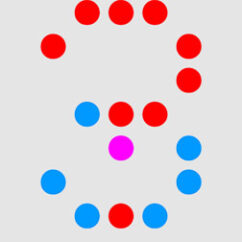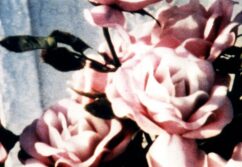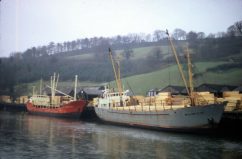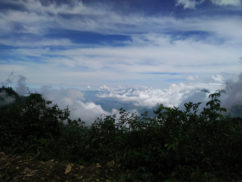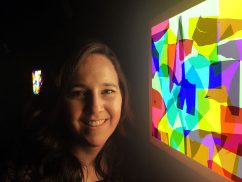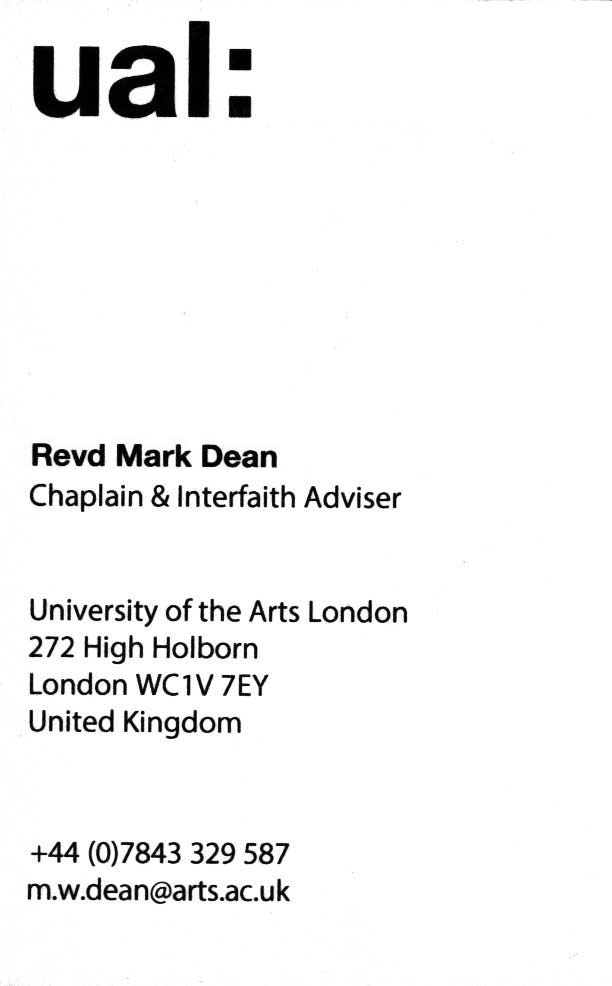Central Saint Martins in the Fields

an exhibition of work by recent art and design graduates from Central Saint Martins, University of the Arts London
The Crypt of St Martin-in-the-Fields, Trafalgar Square, London WC2N 4JH
5 October – 4 November 2017
St Martin’s School of Art was established in 1854 by St Martin-in-the-Fields. The Revd Henry Mackenzie and others were concerned that art and design training should be developed alongside the religious and general education already provided by Church schools, to ‘extend the influence of science and art upon productive industry’ following the Great Exhibition of 1851.
The art school soon became independent, eventually merging with Central School of Art, and now part of University of the Arts London. Central Saint Martins is an internationally recognized centre for art and design education and research, now based in Kings Cross. However, in their different ways, Central Saint Martins & St Martin-in-the-Fields share a common concern for social responsibility based on the belief that the creative growth of individuals, within a supportive and challenging community, can lead to the renewal of society.
curated by Angela Sanchez del Campo and Mark Dunhill
organised by Mark Dean, UAL Chaplaincy and Jonathan Evens, St Martin-in-the-Fields
supported by University of the Arts London and Diocese of London University Chaplaincy
special thanks to The Vicar and Churchwardens of St Martin-in-the-Fields, Allyson Hargreaves, Paul Haywood, Anne Smith, Andrew Willson
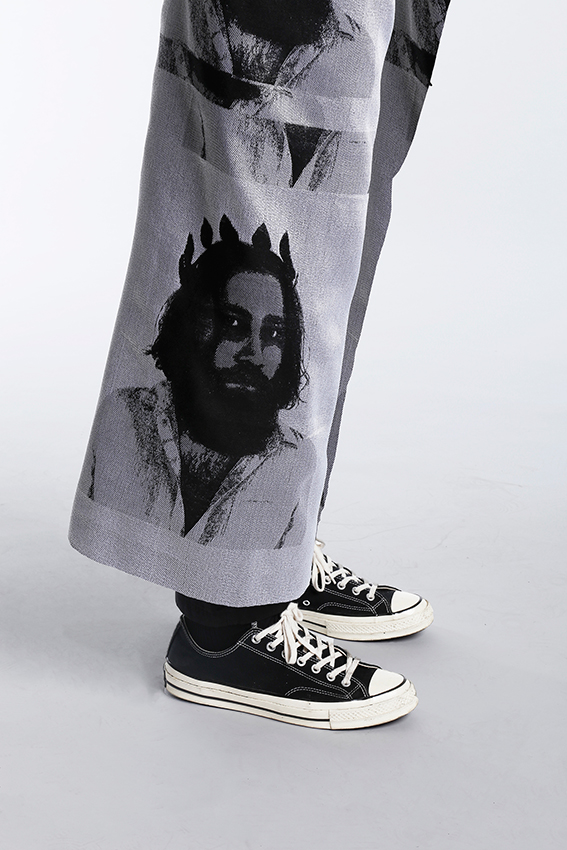
Anna-Maie Southern
‘The Mind’s Eye’ is a menswear collection, which aims to highlight issues of mental health and wellbeing among young men. These woven fabrics incorporate imagery and text to help young men communicate what they and many others are thinking. The collection allows the wearer to actively wear their ‘mind’ on their sleeve thereby reducing social isolation and stigma surrounding mental health difficulties.
‘The Mind’s Eye’ collection of wellbeing fabrics is inspired by art therapy techniques and surrealism, a movement which visually translates the subconscious.
Anna-Maie Southern is a textile designer, currently based in Liverpool. Having recently graduated from Central Saint Martins, Southern is now pursuing a career in textile and surface design, specialising in woven fabric. With a background and experience in the fine arts, Southern’s inspiration for her projects comes from exploring cross disciplinary practices. She strives to design with a conscience, exploring issues and solving them through innovative concepts and striking design.
@annamaietextiles
www.anna-maie.co.uk

Ellamae Asia Statham
The project Acoustic Wool Felt Panels is inspired by the research I developed in three specific areas that all consisted of colour, texture and layering inspired by southern France. The influence was taken from Carcassonne, Toulouse and Gruissan, collecting and recording the imagery and documenting colour through structure. Over all I captured the distressed building blocks, whilst recording the pastel colours which dominated the streets and peculiar shapes taken from the shiny, rustic iron works.
I have pushed the limitations of how experimenting with binders onto wool felt works after a lot of trial and error, and the new ways in which industrial felts can be seen, experimented with, and screen printing pastes can work on such heavy weight fabrics in a very artistic approach. I have predominately used screen printing, and mainly laser cutting large structured shapes.
Ellamae Asia Statham was born in South London in 1995. After a whirlwind 3 years studying Textile Design, specialising in Print, she developed her own sense of style that enabled her to produce a collection of unique products that evoke character, colour and a sense of space. She currently works on a freelance basis with the design company White Bear.
@ellamae_printdesign
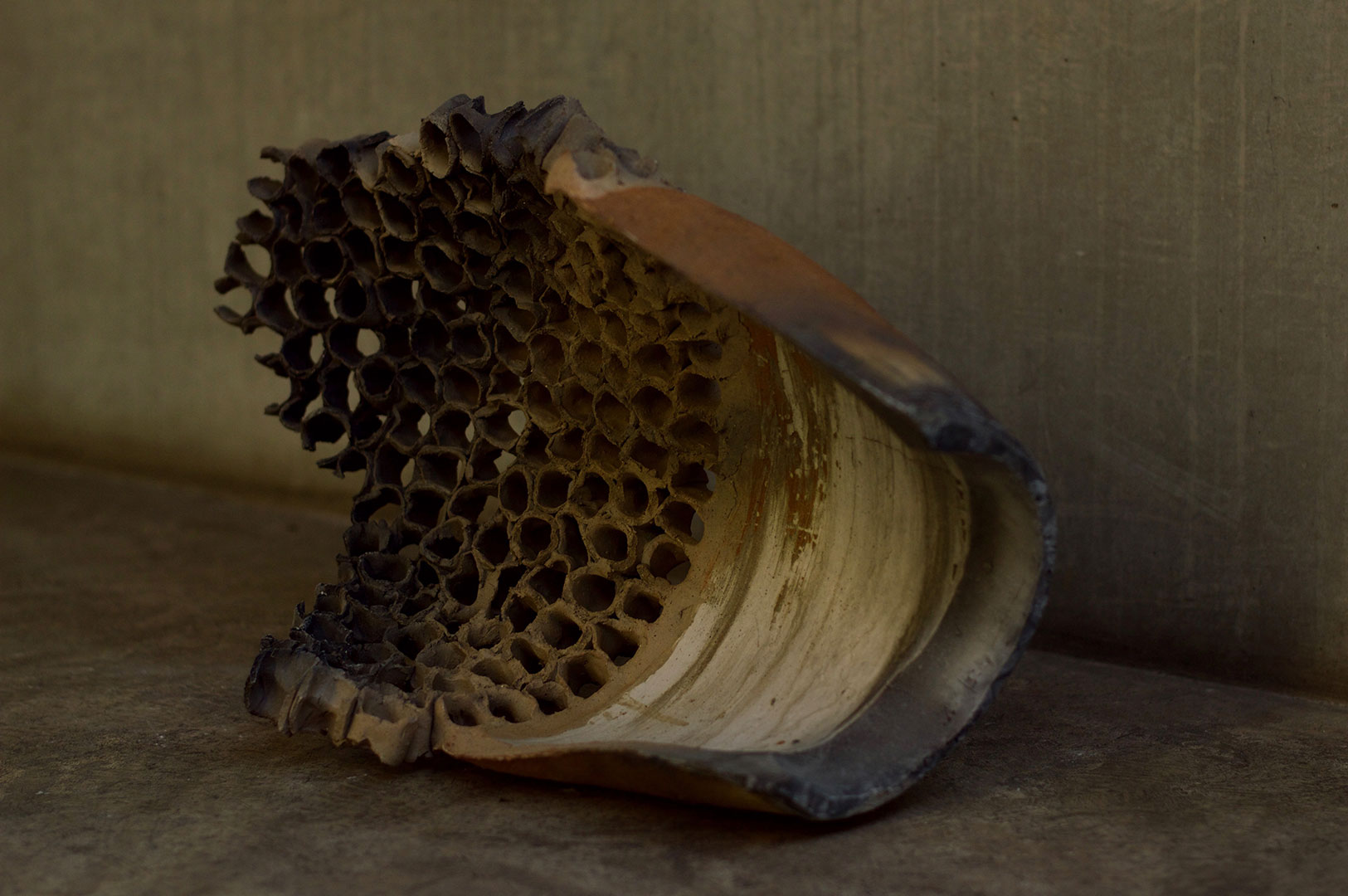
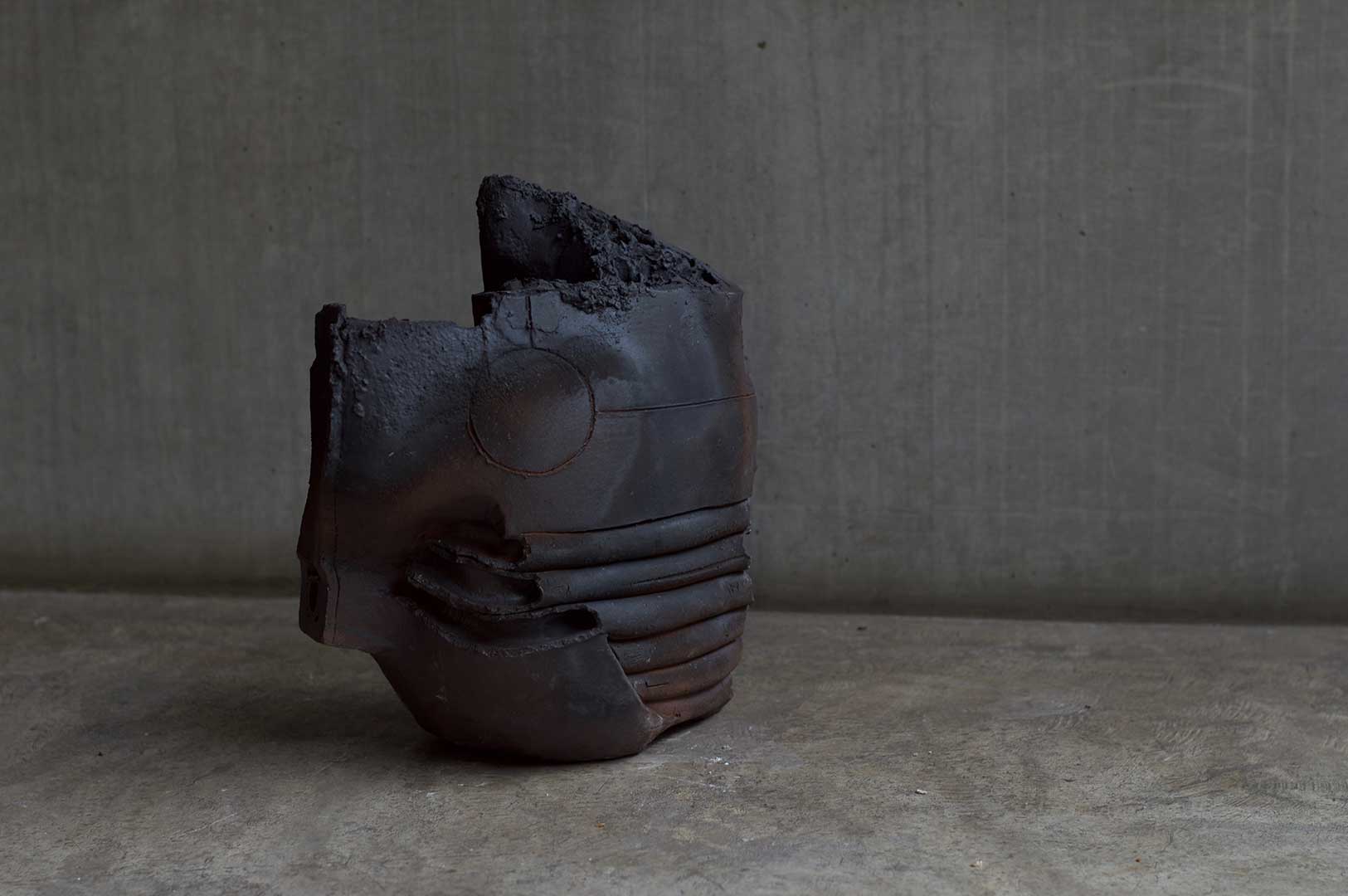
István Szabò
Wreck n.2 is a table top size ceramic sculpture inspired by a curious wooden cylindrical object found in a friend’s garden. It is an open cylinder because this allows the spectator to see both the interior and the exterior. The piece is also a structural experiment to combine ceramic forms made by two different techniques: throwing and extruding. Wreck n.2 was fired in a saggar box which was packed with barley straw which has stained the clay body whilst burning. On the thrown feature of the piece London clay was applied by brush. The London clay body has different properties than the basic clay body of the sculpture. The sculpture clay body is a commercially prepared clay (buff white, gorged clay) and it had resisted the 1250 Celsius firing without distortion whilst the unprepared London clay slip applied to its surface had bubbled and blistered, creating a rocklike surface. This piece suggests my fascination for decayed surfaces of machinery and ruins of buildings. Wreck n.2 resembles an abandoned object in an archaeological find, but with no reference to a real object. Such an artefact may awaken the inherent curiosity of human kind to further investigate.
Face is a tabletop-size ceramic sculpture inspired by part of the face of a wooden sculpture. The sculpture, which was about to rot away, once stood in a mountainous forest location near Zemplén, North East Hungary. I returned to the same area 10 years later but I sadly discovered the same sculpture lying on the ground and knew it would just fade away. I decided to save a part of the face and keep it as a vestige and inspiration to create Face. One day everything will vanish just like that sculpture in the forest. My piece is a vehicle to carry this message of impermanence but made from ceramic, which is a material that can survive thousands of years in the same condition as it was once made.
Hungarian ceramic sculptor Istvàn Szabò lives in London. His working process reflects the multicultural and multi-layered fabric of urban society — particularly that of London — in its state of flux and on-going transformation. This observation is extended to the relationship between urban development and nature, in a search for balance between two seemingly opposing forces. . As a passionate rock climber, he is particularly fascinated by the qualities of the rock surfaces and this source of inspiration is what he claims for his abstract way of expressing his art.
pistiszabo.wixsite.com/ceramic

Larry Frederick Alan James Bizby-Weir
The coat ‘Into The Eternal Darkness’ is derived from a Medieval man’s tunic, with a surface design made to emulate a cathedral’s stained glass window. Created by laser cutting leather and plexiglass, then all hand sewn down onto a base.
Larry Frederick Alan James Bizby-Weir is an ephemeral sound installation with an infrequent emotional rash. Packed with no shortage of names, Larry’s tumbleweed upbringing had him perpetually exhausted, and equipped with lessons out of reach from his Canadian born home. Having finally put down roots in London, for the past 5 years Larry has been absorbing as much as possible. Beginning on Savile Row, Larry trained as a bespoke tailor and pattern cutter at Maurice Sedwell, then moved on to gain a BA at Central Saint Martins in Menswear Design. The importance of hand craft evidently became important in Larry’s work, and whilst studying at University, took lessons in goldwork at Hand & Lock, as well as interned at Ralph & Russo as an embroidery and surface designer. Posthumously to Central Saint Martins, Larry now works as a surface designer in London.


Katherine Illingworth
Walk around the work ‘Leaving The Front Door’ as you would in the street. The size of each panel directly links to the title; they are the size of a door. Thus, the scale of each wooden board is purposely put in relation to the architecture of a western home – home being a key word. The notion of the triptych being comparable to an ornamental room divider is already putting a connotation of wealth and therefore gives a comment of leisure, to even have the time for voyeurism. The terms flâneur and flâneuse were a key concept in the research of this piece. The idea of being a frivolous wanderer setting out into the streets, to then shop for ideas, paradoxically turning them into a commodity. There is a satirical element to the work and with the characters being distorted into a dream like reality, I naturally wanted to create stories within this piece. The work being two sided represents the idea of how the world can be perceived as a flip side. The skeletal shapes shown in woodcuts are a suggestion of the different layers to a person.
Katherine Illingworth’s practice is driven by her spasmodic approach of ‘drawing in the moment’. Energetic, fluid lines mixed with an expressionist use of colour. Engaged by different characters that she comes across in her day-to-day life, whilst living in London. Her critical nature allows her initial impression to distort her subject into caricature. There is a sinister grotesqueness within her work that is led by satirical imagination. She wants to explore her own perception of stereotypes and through that feels she is able to question her own identity. Her piece, ‘Leaving the Front Door’ (2017), was created in her final year of studying BA Fine Art at Central Saint Martins.
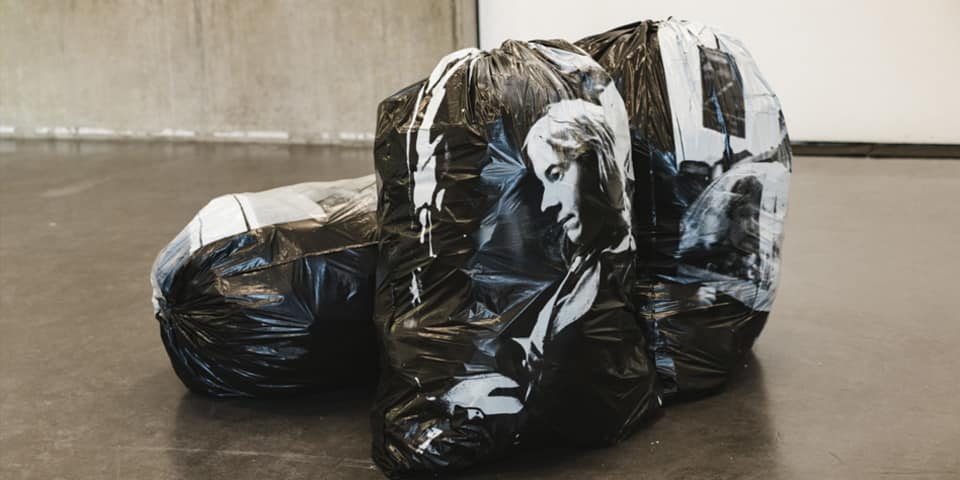
Matilde Damele
My project ‘Exiles’ comes from a desire to represent the constant sense of anguish and struggle we go through as we try to give a meaning to a fragile and fleeting life. I wanted to capture a feeling of loss and estrangement in the expressions and gestures of the people I photographed on the street in my neighbourhood. The screen prints of my images on bin bags emphasize the idea of daily life being perceived often as shallow and valueless, while we search for a deeper understanding of existence and long for a more complete dimension.
Matilde Damele moved to New York in 1999, after a degree in English Literature from the University of Bologna. She took a short course in documentary photography at ICP, worked for the Italian press and as a freelance photographer. She participated in various group shows from 2006 to 2013 and one solo show at the Empire State Building. She lectured at ICP and taught photography workshops in high schools in Brooklyn. She recently graduated with a Masters in Photography from Central Saint Martins and now lives and works in London.

Milo Burgess
‘The Puppet’ comes from a culmination of different reference points, each illustrating made-up ‘hybrid-humanoid’ characters, often created from encounters with different personalities in our modern society. Inspiration also comes from visual media, for example, television shows ‘Black Mirror’ and ‘Humans’, and feature films like ‘Billy Elliot’ and ‘Moonlight’ which challenge the notion of our cultural expectations. Also, musicians such as ‘Kendrick Lamar’, ‘Red Hot Chili Peppers’ and ‘Prince’, who break down clichés or gender ambiguities. Ideas sometimes start with digital sketches or poems and songs. It has taken me a long time to reach a stage where I can express what I want without being too literal. Now, I try to avoid making artworks with a preconceived idea or narrative. I have explored different media, from performance to sound and installation. My intention is to experiment and adapt works continuously allowing for serendipity. For my degree show the origin of the different materials, the materials themselves, the journey from concept to canvas, as well as the people whom I form relationships with along the way all play important roles in defining the final concept of each piece. I use un-primed canvas, focusing on the subject matter within the unframed border and hang each artwork as an installation, to create different viewpoints, exploring depth and perception to the (otherwise) confined 2D surface. Humour is very important to my work too, as it can ask difficult questions in a way that people don’t feel threatened by. Laughter itself is something universal, anyone and everyone can access it. All cultures (perhaps) use laughter in some mode or another, whether this is in the form of a joke, or to constitute certain boundaries, determining limits.


Thomas Moore
‘A Work-day Hieroglyph’ is a sequential narrative running from left to right. This hieroglyph tells a story of the strange behaviour that ensues from a Londoner’s working day. This is a dark but humorous story of the psychological effects that a mundane job has on us and how it makes us behave. From the pain of getting out of bed, the moodiness of the rush-hour, being belittled by your supervisor, and then finally to the debauchery that comes when we’ve finally been freed. The drinking, smoking, drugs, and sex that we can often regret in the morning.
‘Gin Lane 2016’ is a modern day interpretation of William Hogarth’s famous cartoon: Gin Lane (1751). The piece was commissioned by the Royal Society for Public Health to commemorate their 160th anniversary. Hogarth’s Gin Lane was a reflection of the public health issues of the day. His piece gave us an insight into the horrors of the gin crisis that plagued London at the time. Gin Lane 2016 reflects current public health issues, the main ones being obesity and mental health.
The piece gained considerable press coverage, including the BBC News website and almost all major newspapers. Thomas was interviewed by John Humphrys on BBC Radio Four’s Today Programme. Gin Lane 2016 was exhibited next to Hogarth’s original Gin Lane at the Foundling Museum.
Thomas Moore is a London based artist and illustrator who aspires to capture today’s society through drawing. He takes his influences from British cartooning, using satire and the art of exaggeration to describe his subjects. Working mainly in pen and ink he makes complex works based on observations of life throughout London. His work is a form of reportage, documenting culture, human environments, and anywhere that displays ‘the strange’ in society’s behaviour. Thomas has been recognized for his dark depictions of society’s modern relationship to food, grotesquely exaggerating the environments of high traffic, fast pace, junk food restaurants in Central London.

Timo Baier
The architectural rendering which the collage ‘Orianda, Grand Atrum’ is based on depicts the design for an atrium of «Schloss Orianda» upon the Crimea Peninsula. It is part of the archive of the Architectural Museum, Technische Universität Berlin. Neo-Classical architect Karl Friedrich Schinkel envisioned a summer residency for Alexandra Feodorovna, empress consort of Russia (born as Charlotte of Prussia). Schinkel is widely regarded as one of the protagonists of enlightenment in architecture, following Boullée and Ledoux. While this philosophical tendency, along with its architectural and artistic manifestation, was proclaiming a new society, overcoming absolutism, the architect as an artist here still adhered to social hierarchy: commissioned work for the Royal Family, in a period of severe social change from a feudal to a capitalist-bourgeois society. The design, however, was never realised, becoming a virtual space, an imaginary space of potentiality.
Timo Baier was born and raised in Munich, Germany. Graduated with a BA in Architecture (2010-2014) from Technical University of Munich, including a one-year scholarship in Antwerp. Recently obtained an MA in Photography from Central Saint Martins (2015-2017). Photographic exhibition in Munich (2013), participation in group exhibitions in Munich (2012), London (2015) and Bern (2017). Publication with architectural magazine ARCH+ (2015) Berlin.


Jungwoo Park
After a series of unlucky events in London, I wanted to believe that I would be okay in my final year. However, since I am not religious, I wanted to make a religious garment for myself. Therefore, I started to design a protection garment which would protect me from unlucky events. The printing or bleaching process followed rules that I have made. Some of the garments in my collection have a hand embroidery in each corner of the pattern to protect the garment and myself. The inspiration was from various religions and rituals. All the denim has been sponsored by Tejidos Royo.
Read more:
artlyst.com/features/central-st-martins-fields-design-now/
http://www.artway.eu/artway.php?id=878&lang=en&action=show&type=current


